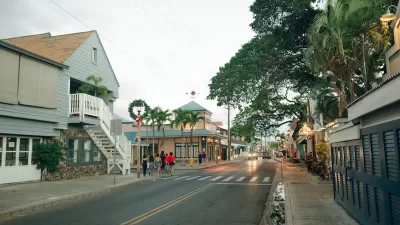Has the renaissance of our urban cores petered out or will the movement of suburban refugees to denser metro neighborhoods continue? Let's see what demographics and economics tell us.

During the recession and post-recession years, between 2006 and 2015, urban areas around the country saw a major influx of new residents as millennials and former-suburb dwellers moved into downtowns and denser urban neighborhoods. Writing in Medium, economist Lyman Stone seeks to find out if this inflow migration to urban cores is a lasting phenomenon or just a "migration bubble." He finds that part of the inflow explanation was driven by cheaper housing in urban areas at the beginning of the recession.
Migrants moved in pursuit of cheaper housing during the recession, with many foreclosed on, and fewer pursuing ownership. This wasn’t because they wanted a better home or a better neighborhood: those reasons became less prevalent. It’s because the relative costs of urban renting suddenly became much more favorable.
As prices in the urban core have increased in comparison to housing costs in suburban areas, the inflow migration has slowed. Essentially, Stone explains, the imbalance that saw people move into urban areas is shifting back to where we were pre-recession as suburbs become the more affordable option once again.
When we look at the last few years of migration, we should see it as a bubble. It was never going to last very long, and was always the product of essentially transient imbalances of in costs that migrants rapidly arbitraged. We are now returning to the normal state of suburban and exurban inflows, and urban outflows.
FULL STORY: How the City Almost Came Back

Planetizen Federal Action Tracker
A weekly monitor of how Trump’s orders and actions are impacting planners and planning in America.

San Francisco's School District Spent $105M To Build Affordable Housing for Teachers — And That's Just the Beginning
SFUSD joins a growing list of school districts using their land holdings to address housing affordability challenges faced by their own employees.

The Tiny, Adorable $7,000 Car Turning Japan Onto EVs
The single seat Mibot charges from a regular plug as quickly as an iPad, and is about half the price of an average EV.

Seattle's Plan for Adopting Driverless Cars
Equity, safety, accessibility and affordability are front of mind as the city prepares for robotaxis and other autonomous vehicles.

As Trump Phases Out FEMA, Is It Time to Flee the Floodplains?
With less federal funding available for disaster relief efforts, the need to relocate at-risk communities is more urgent than ever.

With Protected Lanes, 460% More People Commute by Bike
For those needing more ammo, more data proving what we already knew is here.
Urban Design for Planners 1: Software Tools
This six-course series explores essential urban design concepts using open source software and equips planners with the tools they need to participate fully in the urban design process.
Planning for Universal Design
Learn the tools for implementing Universal Design in planning regulations.
Smith Gee Studio
City of Charlotte
City of Camden Redevelopment Agency
City of Astoria
Transportation Research & Education Center (TREC) at Portland State University
US High Speed Rail Association
City of Camden Redevelopment Agency
Municipality of Princeton (NJ)



























